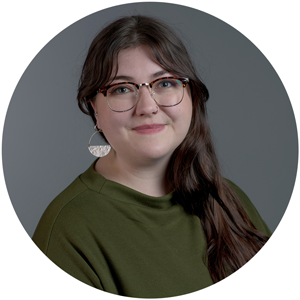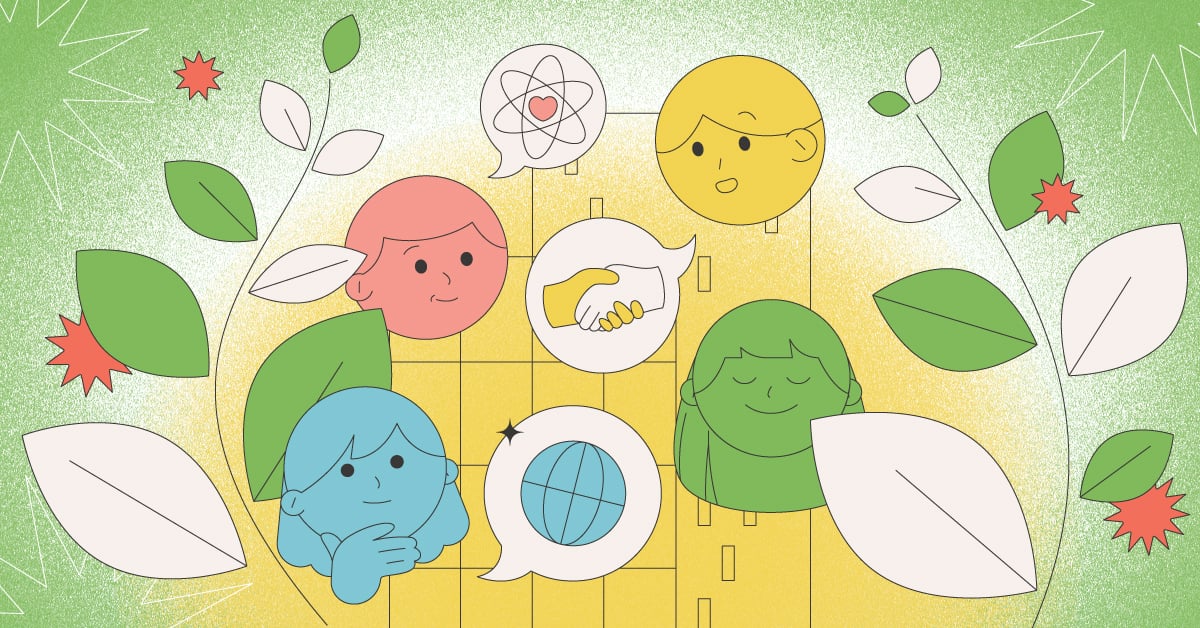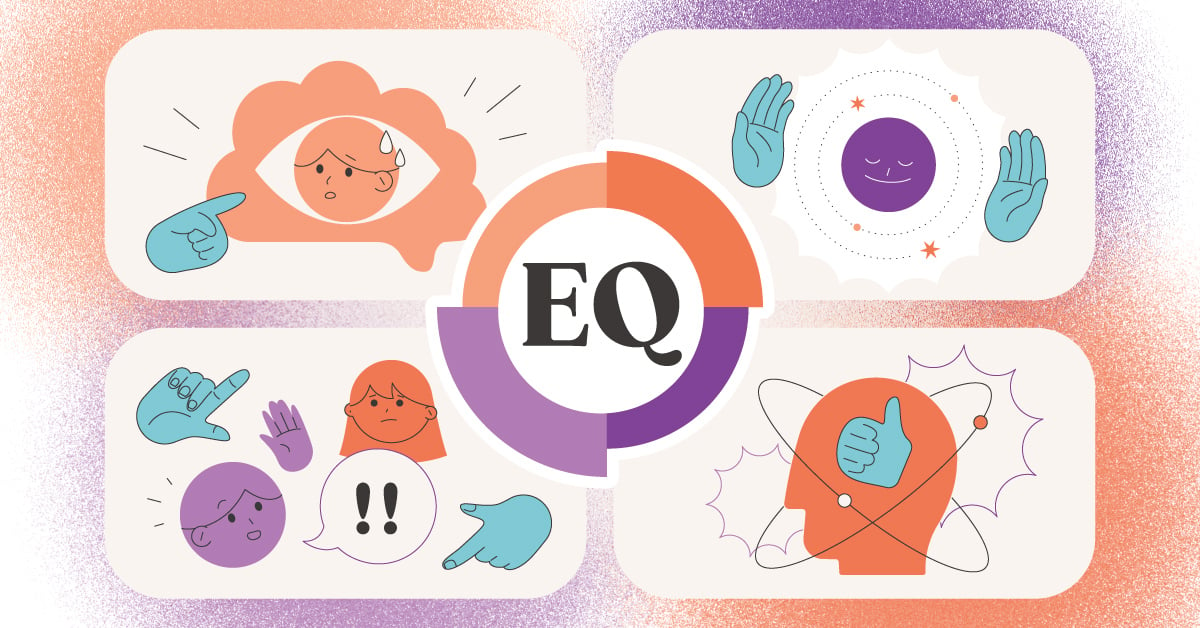
Ever notice yourself reacting more intensely around specific people? Do you often feel like one person in your life just doesn’t 'get' you?
Those feelings might be telling you something important: you have an emotional blind spot.
Research from Harvard Business Review shows that while 95% of people think they’re self-aware, only 10 to 15% actually are. That kind of discrepancy is staggering. Why are so many people misjudging their awareness?
The answer lies in something you can’t recognize on your own: emotional blind spots.
What is an Emotional Blind Spot?
An emotional blind spot is a gap between how you perceive yourself, including emotional intelligence, and how others perceive you. This definition varies depending on your source, but generally, understanding emotional blind spots as misaligned perceptions is a great way to start building your awareness.
Signs You Might Have an Emotional Blind Spot
- Repeated conflicts or misunderstandings
- Do you find yourself reacting strongly to certain people in your life?
- Are you frequently feeling misunderstood by a specific person?
- Feedback from others that surprises or offends you
- Is constructive criticism surprising to you?
- Do you often feel unprepared or taken off guard when someone offers feedback?
- Strong reactions you can’t explain
- Do you often get upset without understanding why?
- Are your moods inconsistent or constantly shifting?
- Minimizing or dismissing others’ feelings
- Do the emotions of other people often feel outlandish to you?
- Does it seem like others are always overreacting to you?
How to Find Emotional Blind Spots
These questions are good indicators that an emotional blind spot exists, but awareness is merely the first step to making change. Here are four ways to uncover emotional blind spots.
Ask a Trusted Source for Their Input
Start with the people who know you best! Consult a loved one or someone you trust—this can be a family member, your partner, your best friend, your therapist, your professional coach, or your mentor.
“Not all blind spots are roadblocks, but you still need to be aware of them before they hinder your progress,” said Dr. Carol Gaffney, consulting Psychologist and Executive Coach at Behavioral Intelligence® Solutions. “How do you make changes in order to get to the next level? You can become aware of blind spots by monitoring your intense or very personal thoughts, feelings, and behaviors. Let these prompt self-reflection on what you are thinking, feeling, and underlying values. Another way is to be open to feedback from others regarding your behavior.”
Ask open-ended questions to prompt honest responses. Instead of asking, “Do you think I overreact a lot?” ask, “Can you tell me about a time when you think I had a strong response?” or “What patterns have you observed about my emotions?”
Honest feedback is a gift! This is your opportunity to practice a positive response with someone you trust. Try to listen and be receptive. If you feel yourself getting defensive, note the circumstances and try to find where the feeling is coming from. That discomfort can be a great starting point for addressing a blind spot.
Take an Assessment to Learn More
The next step is to learn more about your emotional intelligence (EQ). The feedback from your trusted advisor will give you a starting idea of where you can focus, but getting more information will help. That’s where an EQ assessment comes in.
A reliable EQ assessment measures your ability to sense, understand, and effectively apply emotions for higher levels of collaboration and productivity. It examines five key areas pertaining to intrapersonal and interpersonal relations: self-awareness, self-regulation, motivation, social awareness, and social regulation.
By taking an assessment, you’ll get reliable points of data about your personal EQ. Instead of having to guess at your regulation or awareness, you can learn more about yourself with a customized report. TTI’s EQ Report is focused on a positive approach to improving EQ, encouraging respondents to strengthen their skills instead of questioning their development.
You can also use multiple types of assessments along with EQ to gain deeper insight. “I love looking at behavior and motivation in tandem with emotional intelligence,” said Gaffney. “You need to be aware of extremes in all aspects of yourself—areas of passion or indifference—because those areas are potential blind spots.”
Reflect on Repeated Conflicts
If a similar type of conflict continues to arise in your personal or professional life, it’s worth examining. After working with your trusted advisor and taking an emotional intelligence assessment, start to recognize your personal patterns.
For example, if you continue to have disagreements with a certain coworker, dig into the details. Do they speak to you in a way that reminds you of someone from your personal life? Did you have a negative experience with them early in your interactions that is still coloring your perception of them?
Emotional triggers are important to recognize. They can reveal patterns of internal bias, personal history, or anything else that might be holding you back.
Increasing awareness about your emotions will only help you as you work to tackle blind spots.
“I was providing individual coaching for a talented engineer,” Gaffney told us. “He was highly intelligent and skilled in his field, but kept hitting roadblocks with his team. He couldn't break through to do the kind of exciting work he wanted to do. He kept telling me he just needed to break through to his manager to get to the next level. As he told me that, I was thinking, ‘How many people like to be broken through?’ The way he was speaking and thinking about others revealed a blind spot. He was making assumptions about the people around him, and it was getting in his way.”
She was still able to help the engineer start to understand his colleagues using the lens of behavioral profiles. By observing his team members’ behavior, he increased his awareness and transformed his blind spot into an opportunity to connect more deeply.
Document Your Experiences and Reactions
Keeping track of your emotional experiences is crucial to building better habits and uncovering emotional blind spots. You can do this any way you’d like: recording yourself for listening later, keeping a physical journal, or jotting down realizations in your notes app on your phone.
Recording your experiences allows you to start tracking patterns. Does your mood decline at the same time every day? That could be a blood sugar crash. Eat a snack and see if that changes.
Do you have excellent conversations with your boss in the morning, but struggle in your interactions in the afternoon? They might be dealing with a similar problem—try to time your meetings to align with their behavior.
Are you consistently having chaotic Monday mornings, which affect your mood and raise your stress levels? Try to plan for the week ahead on Friday and set yourself up for success after the week.
These are simple examples, but go to show just how powerful increasing your awareness is. Little habits add up, positive or negative, and your current habits might be adding up into an emotional blind spot.
Changing your patterns and exploring alternatives is a great way to find a solution, and if it doesn’t solve the issue, at least you have new good habits to support your emotional development.
If you want to learn about your personal emotional intelligence, TTI can help.



